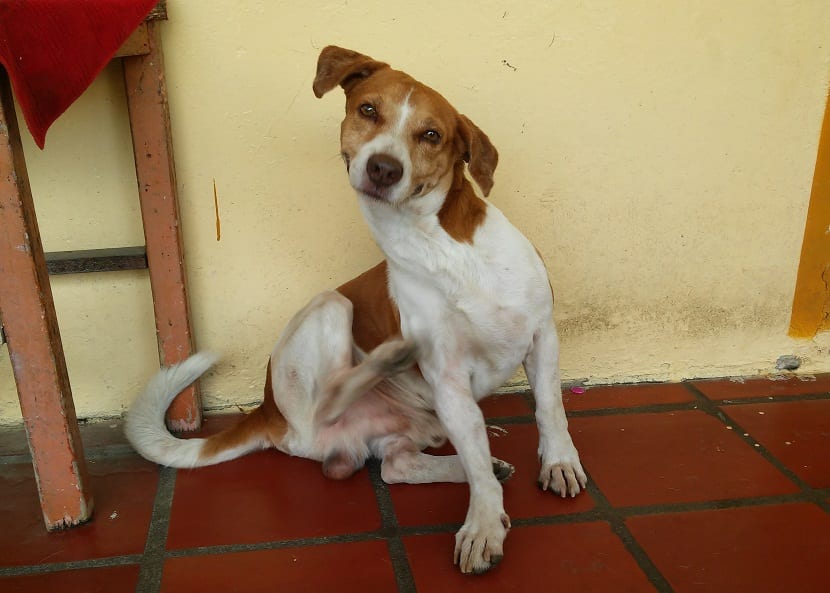
Scabies is a disease caused by mites Found on the surface of the skin and in the ear, these mites often produce skin changes that can scratch the pet and lead to serious injury. There is a great diversity of scabies and each one is produced by a different mite, they are usually differentiated by the location of the lesions it produces.
Today we are going to talk about a scabies in particular, this is the demodectic mange, a common disease in dogs, but very rare in cats. The mite that is capable of transmitting this disease usually inhabits the interior of the hair follicleThey are commonly transmitted by the mother through direct contact with her children in the first days of their life.
But do you know what demodectic mange is?

It is usually considered part of the dog's normal skin flora so it is common for them to have this, although these parasites proliferate when there is a drop in defenses and when the immune system cannot control the population of these bacteria. Similarly, there are species in dogs such as injai modedex which is more elongated and is located in the sebaceous glands, there is also the demodex comeu which is a little shorter and is located in the superficial zone of the epidermis.
The dogs most likely to have this type of mange are short-haired, light-coated and purebreds.
In dogs this condition can be found in two different ways, one that is localized and the other that is generalizedThe age of the pet is also important. In the case of young dogs with localized mange, it usually appears in the first months, this heals without any treatment in six weeks, but in some cases this can evolve into generalized scabies, this is usually caused by a drop in defenses, it usually affects the head frequently and can produce areas without fur and erythema, but usually dogs do not scratch.
Mange occurs in young and adult dogs
In the case of young dogs with generalized mange, this is usually seen during the first year of life, in addition there are more areas of the body that are affected by serious damage to the skin, practically this is complicated with a bacterial infection which will cause the dog to scratch strongly, being a hereditary disease.
In the case of adult dogs with mange Generalized, it can be said that it appears when the dog had problems in youth and it was not resolved at that time. It can also appear spontaneously where parasites proliferate due to some pathology.
This condition is usually diagnosed by skin scrapings deep, that is, with two fingers you will squeeze the skin and with a scalpel you will scrape until the blood appears and then it will be seen through the microscope. Afterwards you can also do a acarogram, this is a count of all the forms that are seen, if there are many eggs and larvae it is because the process is active.
In the case of the localized scabies, this cannot be treated because it is self-limiting, but topical amitraz can be used, in the case of generalized a full shaving so that the products enter the skin easier, you can also do an antiseptic bath to treat pyodermas and an acaricidal bath once a week.
You can also give some oral treatments as is the case with milbemycins.
Antibiotics are also recommended to be able to prevent bacterial contaminationFatty acids and vitamins can also be added if the dog stopped eating, in this case it is important to castrate the pet to prevent other infected animals from appearing.

Hello. I have a 2-year-old setter that has the rim of the eyes that the hair does not come out, they have told me that it could be demodectic mange, I am giving it bravecto, the pill is that big there is, I hunt it for 4 or 5 months and He does not take it off, I would like to know if I have to continue giving him that pill or is there something else to be able to give it to him, but the rest of the body has it well, it is only the circle of the eyes.
Thank you very much